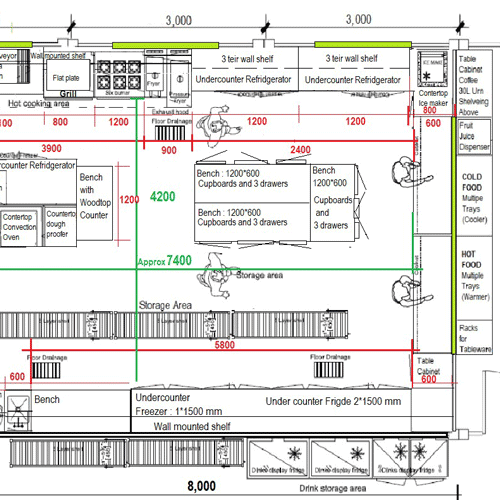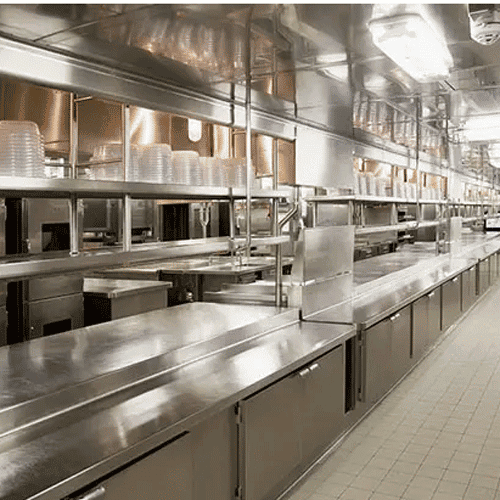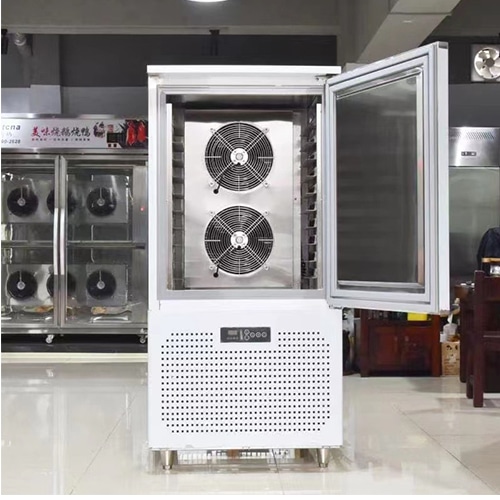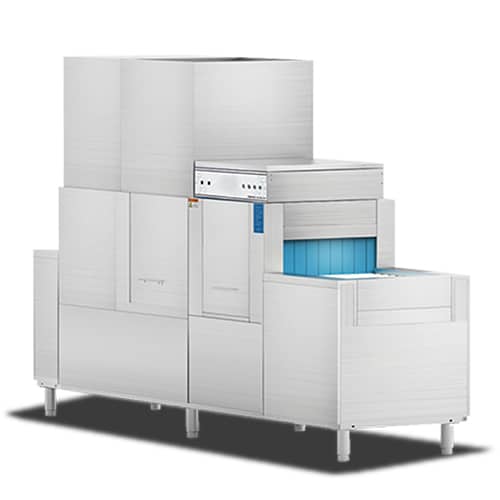China Best Central Kitchen Equipment in Chefmax
Central kitchens have become a popular trend in recent years, they can be a great help for restaurant chains and solve the dilemma of some small restaurants, you can read this article to learn everything about central kitchens, which also covers the list of central kitchen equipment.
1. What is central kitchen
A central kitchen is a commercial kitchen space owned by a restaurant chain or hotel group that stores and prepares ingredients, provides finished or semi-finished food for different restaurant locations, and delivers this food in bulk to each location via cold chain transport, hot chain transport, or mixed hot and cold transport. There are also central kitchens that are set up by large corporations and leased to other smaller restaurants so that they can use the central kitchen equipment to marinate meats, wash and process vegetables, or even complete the cooking process directly in the central kitchen and send it out for take out.
2. What are the benefits of a central kitchen
A.Standardization
It is very important for restaurant chains to standardize the taste of their dishes. If all your semi-finished products are processed in a central kitchen using the same equipment and recipes, it is very helpful to regulate and maintain consistency, you only need to consider the quality of the purchased ingredients and storage in transit.
B. Cost reduction
The most significant advantage of a central kitchen is that it saves space in the restaurant kitchen. Most of the food preparation is done in the central kitchen, and the restaurant only needs to prepare some of the end cooking facilities. You can use the saved rent and space to expand the dining area or put into operation, increasing the restaurant’s visibility and service comfort.
C. Increase efficiency
Usually, to meet the demand of concentrated orders from multiple outlets, the central kitchen is equipped with some large semi-automatic or fully automatic equipment, and the production procedures can be connected quickly between each other, and a large amount of food can be prepared at one time, requiring very little manpower. The restaurant saves the time spent on food preparation, so it can spend more energy on customer service or develop take-out business.

D. Brand development
The survival of the restaurant can not rely on a single dish, even if the food is less variety of fast food, but also regularly develop new flavors to attract customers, all restaurants want to innovate hot dishes, central kitchen equipment can provide different kinds of kitchenware and equipment in order to carry out dish development.
E. Rental of unused space
Depending on the order, if you can finish the preparation of ingredients for each branch in the morning, then you can rent out the kitchen to other restaurants or food trucks in the afternoon and evening in separate areas, which can bring extra income.
3. The principle of choosing central kitchen equipment
A. Quality
Due to the need to handle a large amount of ingredients for a long time, kitchen equipment has very high requirements for quality. Problems with one piece of equipment may affect several outlets at the same time, so you need to choose a dealer with extensive experience to provide you with commercial kitchen equipment and after-sales service, and it is best to have someone on your staff who knows the relevant knowledge so that you can take timely action when problems arise with the machine.
B. Space
Although for functional requirements, central kitchens always choose large equipment, but it is best not to exceed the current maximum order too much, otherwise it will cause space waste and crowd the space of other equipment.
C.Easy to move
If you are opening a central kitchen for your own restaurant chain, the dishes and the ingredients needed will not change much and you do not need to change the location of the equipment to fit the order requirements, but if you are going to have short or long term contracts with different partners, it may be necessary to group the machines they often use together according to the order requirements to improve the efficiency of food preparation, so you should consider choosing machines with wheels that easy to carry out the movement.

D. Safety
Traditional kitchen equipment uses fuels such as LPG, natural gas, etc. For central kitchens, there are often several people operating multiple large equipment. To reduce the safety risks associated with open flames and the need for energy efficiency, you may consider using electronically controlled commercial kitchen equipment, such as induction cookers, steamers, voltage cookers, etc.
E. Cleanliness and hygiene
Large equipment is not easy to move, the back and bottom are easy to accumulate dust and grease, you can choose stainless steel casing or machines with wheels to solve the problem, stainless steel material is smooth and easy to clean, equipment with wheels is convenient for your staff to clean the ground and walls.
4. The Central kitchen equipment list
What equipment to put in a central kitchen depends on your restaurant chain and the type of partner restaurants. If the area is limited, the priority is to plan the construction according to the most or most stable orders, or if the area is larger, you can acquire a full range of kitchen equipment to rent to different types of restaurants. The first thing a typical central kitchen should be equipped with, depending on its function, is storage equipment, food cleaning equipment and chopping equipment.
A. Storage equipment
Central kitchen as a warehouse has many advantages, firstly, the price of purchasing ingredients in large quantities is lower than that of restaurants in small quantities, secondly, the average rent of central kitchen is lower than that of restaurants in commercial streets, and the storage cost is also lower.
Blast Freezer: Freezing meat and pasta such as beef, lamb, seafood, etc. by quickly cooling down to -40℃, which can be easily put into the freezer or transport truck for subsequent storage.
Commercial Freezers: For central kitchens to supply more than one restaurant chain, ordinary freezers are harder to meet storage needs, and many central kitchens choose to build walk-in freezers, along with other vertical freezers for easy access by staff.

B. Food processing equipment
Pre-processing is the second step to consistent taste and flavor (the first step is sourcing consistent quality ingredients). Central kitchens often need to process large quantities of vegetables and meat in bulk, and using equipment to do so is less labor intensive than doing it all by hand.
Commercial Washers/Peelers: Your central kitchen needs to process large quantities of leafy vegetables and root vegetables such as potatoes and carrots. Washers and peelers are commercial kitchen equipment that will definitely be needed. Choppers: Quickly chop leafy and root vegetables and switch between dicing, slicing, and shredding to meet different food preparation needs.
Meat grinder/chopper: Quickly chops meat for meat patties, burger patties, and sausages.
Mixer / Pastry Machine: Make a large amount of dough or batter at one time to make semi-finished products for baked goods and increase efficiency.
C. Food Cooking Equipment
The choice of cooking equipment depends on the percentage of finished products needed at the outlet. There are times when ingredients only need to go through the storage and preparation stages before they can be delivered to the restaurant kitchen, and you can reduce your spending on cooking equipment purchases, while there are other situations where cooking equipment is needed to produce the finished product, such as when a central kitchen is to be rented out to mobile food trucks and flash restaurants.
Gas/induction cooker: The most widely used kitchen equipment for frying, soup, grilling and baking, and cooking a variety of foods. If there is enough space in the kitchen, you can consider placing them in the cooking area and renting them out to other small restaurants.
Commercial steamer: Using a large steamer can make 20-40 plates of rice at a time, and can also be used to steam seafood, meat and other foods.
Cooking machine: A large stir fryer can automatically reheat food with a menu, it can also reheat sauces.

Commercial grills: making fried noodles, steak and other fried food, if you need to provide finished food can choose this equipment.
Commercial fryer: It is suitable for donuts, French fries, fried chicken, fried fish, burger patties and other fried products, which can be simply cooked and fried in the central kitchen first, and then transported to the restaurant for re-frying to save time.
D. Cleaning equipment
Since the central kitchen does not provide meals, there is no need to clean dishes, but there will still be a lot of tools to be cleaned during the food preparation process, you can choose equipment to assist in cleaning according to the situation.
Commercial dishwasher: Suitable for central kitchens to clean used bowls and tools, generally central kitchens will choose an uncovered or ultrasonic dishwasher, and then decide the size according to the number of cleaning per day.
Disinfection cabinet: Use hot air circulation to disinfect towels, knives and cutting boards to ensure the clean use of tools.
Range hood: A range hood is required in the cooking area of a central kitchen, which protects equipment and kitchen air.
5. What Chefmax can do for you
With nearly 20 years of experience in product manufacturing and kitchen design, Chefmax can provide you with a complete and comprehensive service from design, customization, production, shipping, installation, acceptance and after-sales service. Most of our products have undergone rigorous CE and ETL testing and are designed to perform smoothly and safely in a central kitchen. If you need to know more about the one-stop central kitchen equipment, you can call or send an email inquiry to [email protected], we will provide professional telephone or video explanation service according to your actual situation.
























